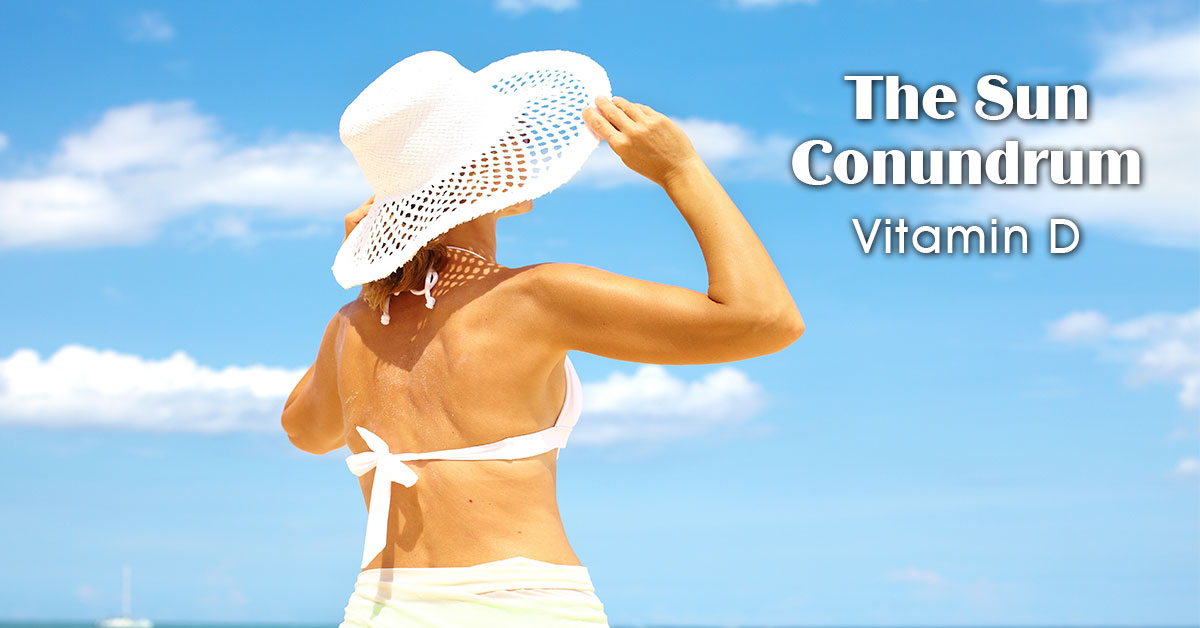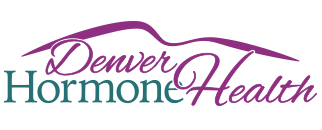VITAMIN D – The Sun Conundrum

Vitamin D is often referred to as the Sunshine Vitamin. Oh, remember the days of baking for hours wearing nothing but baby oil and iodine and holding sun visors up to your face to really turn up the tan? Or in most cases, burn. Who ever lusted after “tall, light and handsome?” And who ever asked for the blotchy sun spots and skin damage you now run to dermatologists for? Well, the thing that’s great about a minimal sun soaking today, is that it’s free.; your body makes it when sunshine touches your skin. It is believed that the lack of Vitamin D is the result of minimal exposure to the sun, caused by among other things, the over-use of sunscreens. Boosting and maintaining healthy levels of vitamin D is as simple as spending between five minutes and half an hour in the afternoon sun a couple of times per week. Coming out of our winter hibernation and seeing some long-awaited sunshine is enough by itself to make us feel better and boost our moods. But this is when we are able to top off our vitamin D stores that have been depleted over the winter. But even in warm weather, there is a growing trend to get too little of the sun’s rays because of our lifestyles. We sit in offices all day. Or at our desks at home. The healing rays of natural sunlight can’t penetrate glass. So sitting in your air-conditioned car won’t cut it. Advertising has made us sun-phobic. For the last 30 years or so, doctors (dermatologists in particular), health officials, beauty experts and many product companies have been demonizing the sun. They’ve told us to avoid it because without sunscreen, exposure to the sun’s rays will damage skin and cause cancer. So today, when we do go out, we slather on high enough SPFs to cocoon us from any helpful rays. If 15 used to be good, now 100 SPF’s line pharmacy aisles.
Eat This Up
It is nearly impossible to get adequate amounts of vitamin D from your diet. Sun exposure is a much bigger magic bullet. For example, a person would have to drink ten tall glasses of vitamin D fortified milk each day just to get minimum levels of D into their diet. (Hello, bloat) “Fortified” is the key word when it comes to getting any D from what you eat. But you do have choices; more than ever before, and some pretty interesting ones:
- salmon
- sardines
- mackerel
- herring
- catfish
- halibut
- tuna
- shrimp
- (notice the fish focus here)
- But here’s some choices you might never have considered. And it’s just a taste:
- Caviar (maybe in my next life, or after a big Lotto win)
- Fish Roe (yea, Sushi!)
- Extra lean pork-BBQ spareribs don’t count, sorry
- Tofu, firm or light
- Plain soy yogurt
- Cod liver oil-oy!
- Portobello mushrooms
- Vanilla and light ice creams
- Spinach soufflé
- Swiss and cheddar cheese
- And ok, baby, get ready to fill your carts with these:
- All sorts of baby food meals like Broccoli and Chicken
- Then comes some somewhat unexpected choices:
- Boxes and boxes of fortified cereals from Grape Nut Flakes to Cocoa DYNO-BITES, Berry Burst Cheerios, Cinnamon Crunchers, Fruity Pebble, even Kellogg Star Wars and SpongeBob Square Pants.
- Spaghettios? Yep
- Wieners, bologna and bratwurst? You can bet your buns.
- Mikyway Bars and Snickers-no more sneaking around?
- Even…are you ready…Taco Bell Burrito Supreme with beef.
For all this, the rule still follows that none of these foods will supply you with enough Vitamin D for optimal health.
If you can remember, Wonder Bread’s slogan was “Helps Build Strong Bodies in 12 ways.” They added vitamins and minerals, but it was never for
D Doesn’t Have to be Such a Dilemma
If you happened to read about Vitamin D somewhere, (and who does that?) your head would be spinning. Vitamin D is a vitamin, right? So now you’re telling me it’s a hormone. And like all hormones, they send chemical messages throughout your bloodstream to cells just waiting for them to tell them what to do. If they don’t get the message, there’s a lot of problems that can get you. It’s a lot to take in. You just figured get in the sun more, take more supplements, even hit a tanning bed. Simplistic, and just not effective. D deficiency can be dangerous. Too little or too much of any hormone can lead to a hormone imbalance and a list of illnesses that can take you down and out.
Dr. Stephen A. Goldstein MD, F.A.C.S. at Denver Hormone Health is renowned in the field of hormone replacement. He’ll ask you a lot a questions, and give you a lot of answers. Simple tests will tell him what D is doing to your body and your health. Which makes it easy for him to create a unique treatment plan. Yes, it’s a lot to know, but know and feel confident that Dr. Goldstein is the go-to hormone replacement specialist, to feeling the best you can be. Call for an appointment now. The first thing you’ll learn is that you’ve come to the right place.
